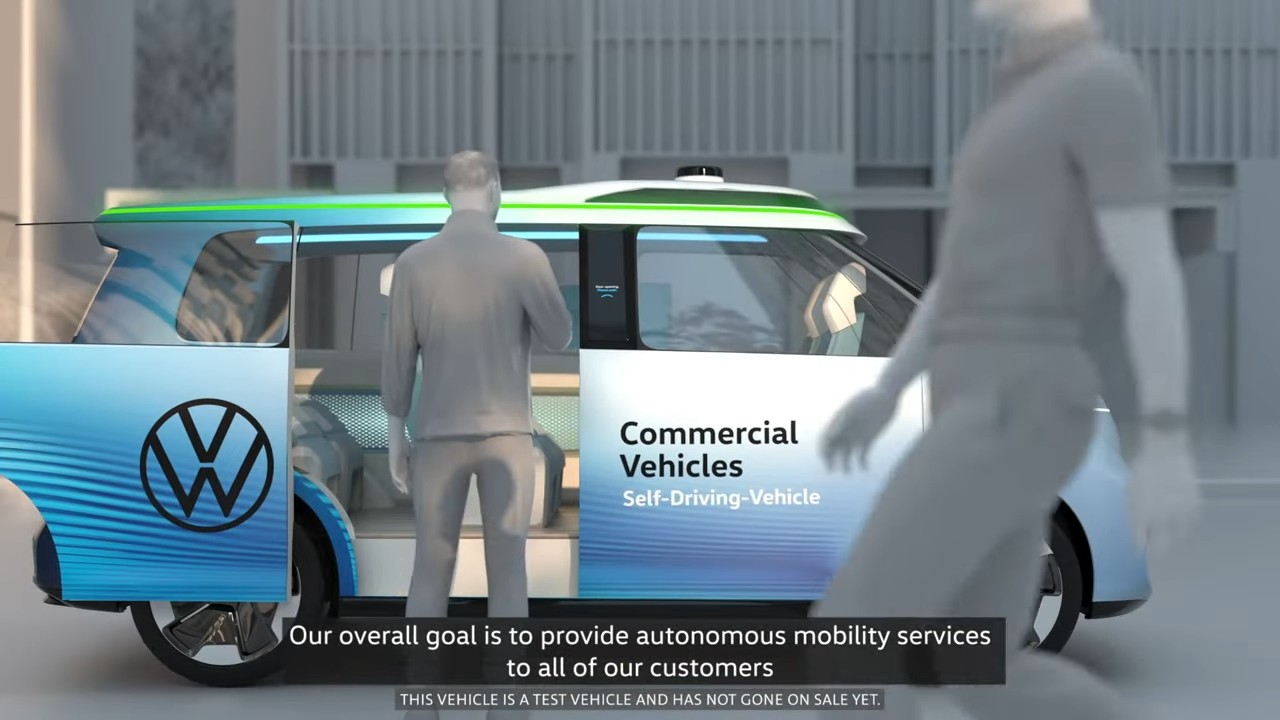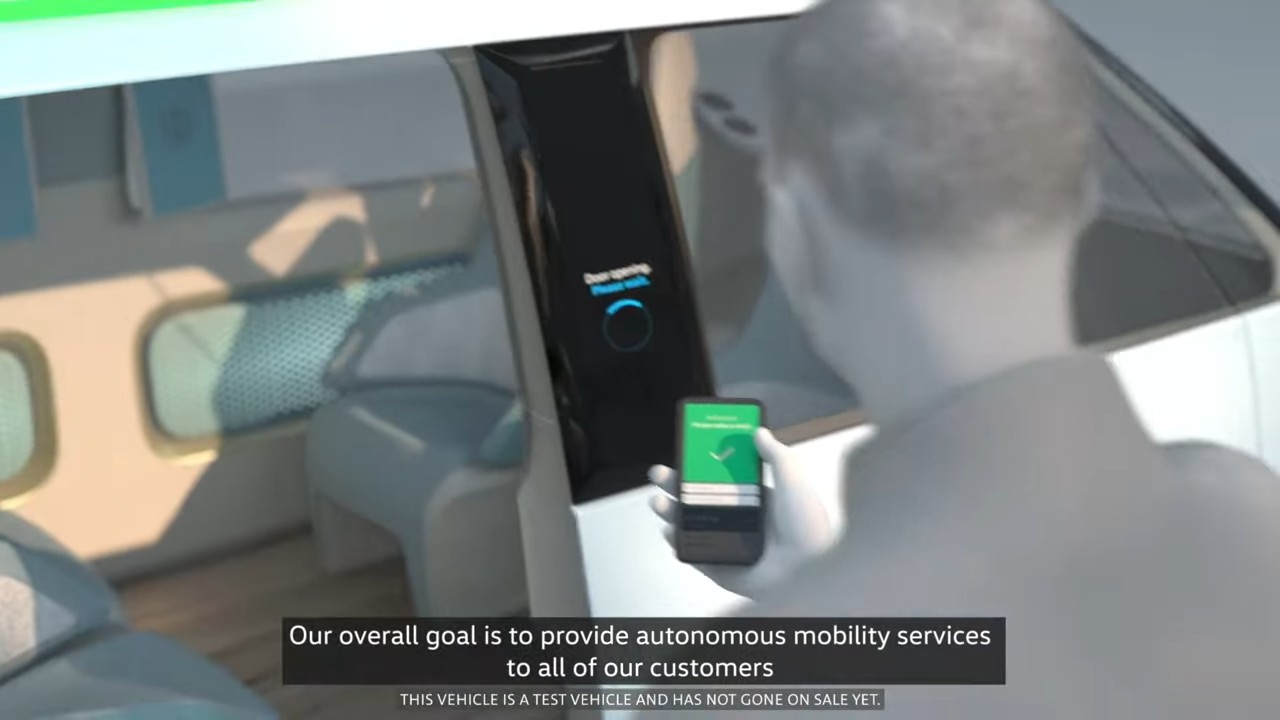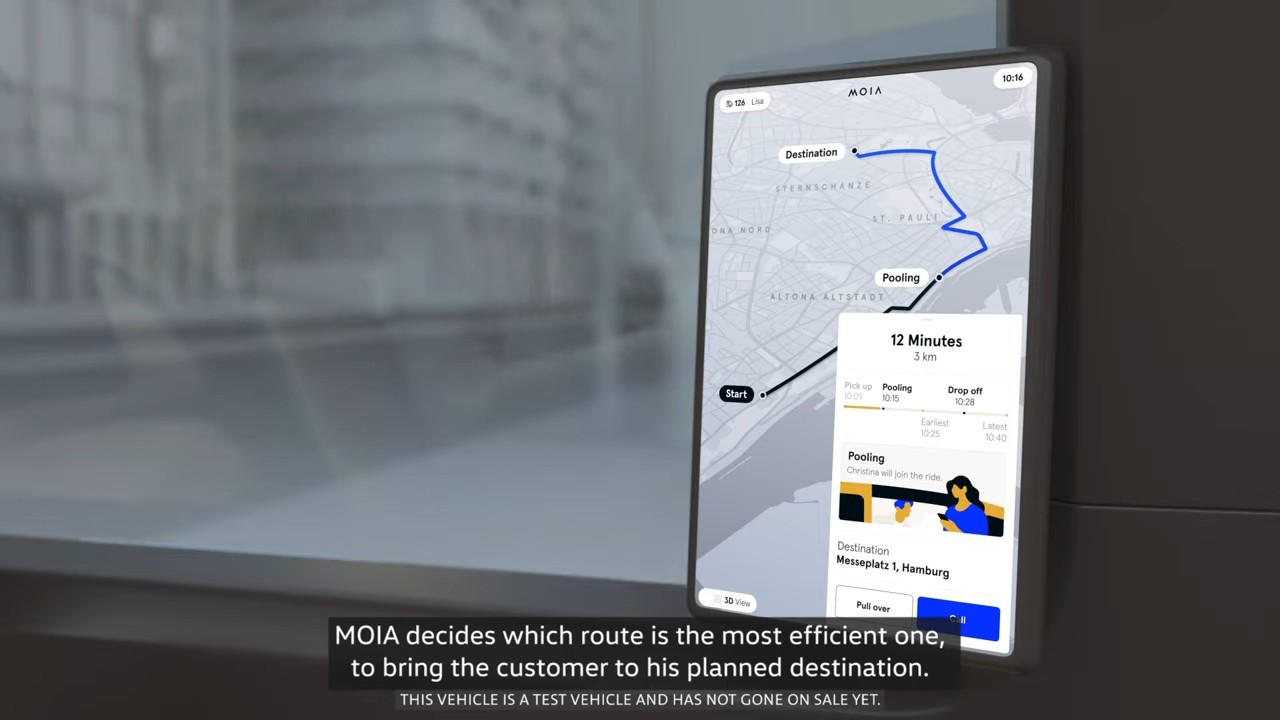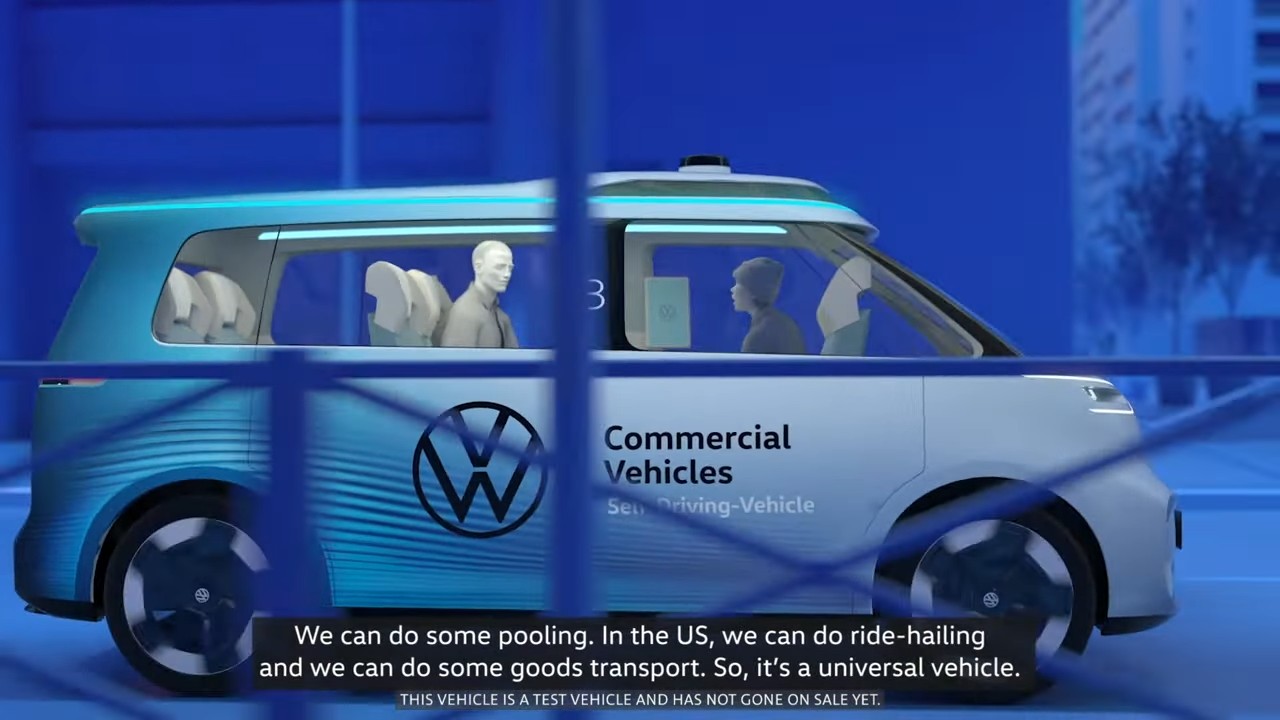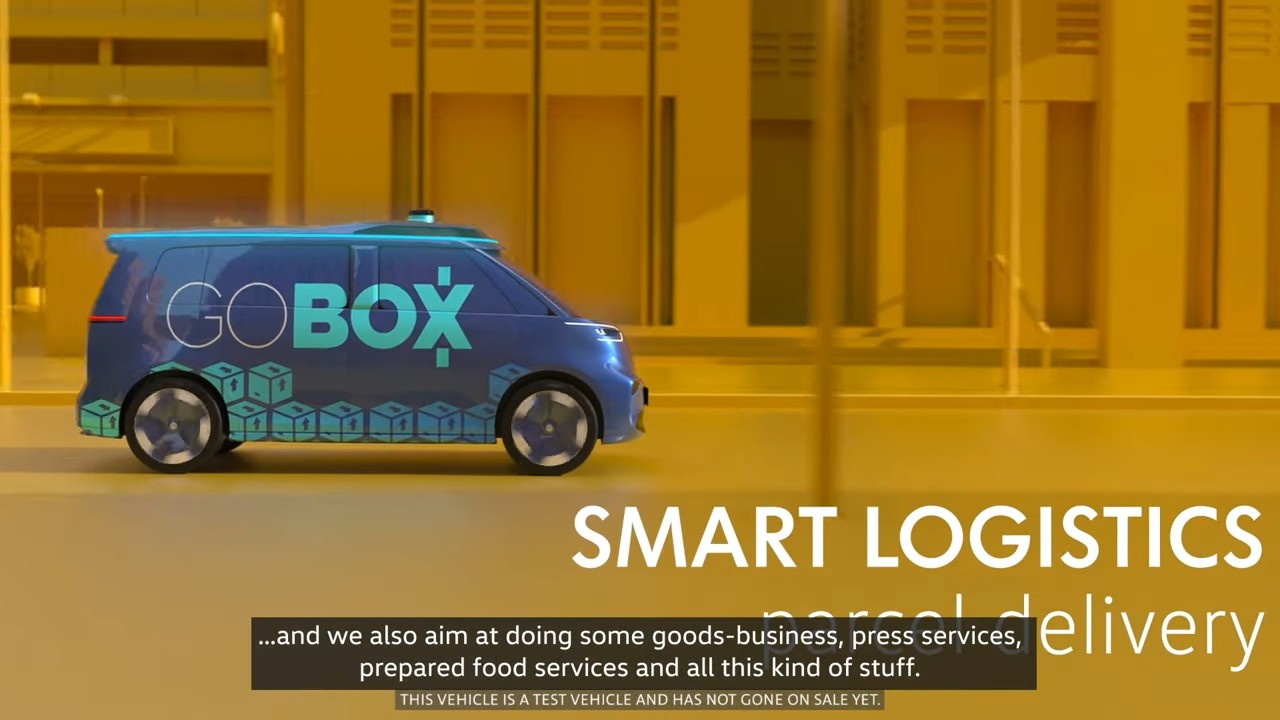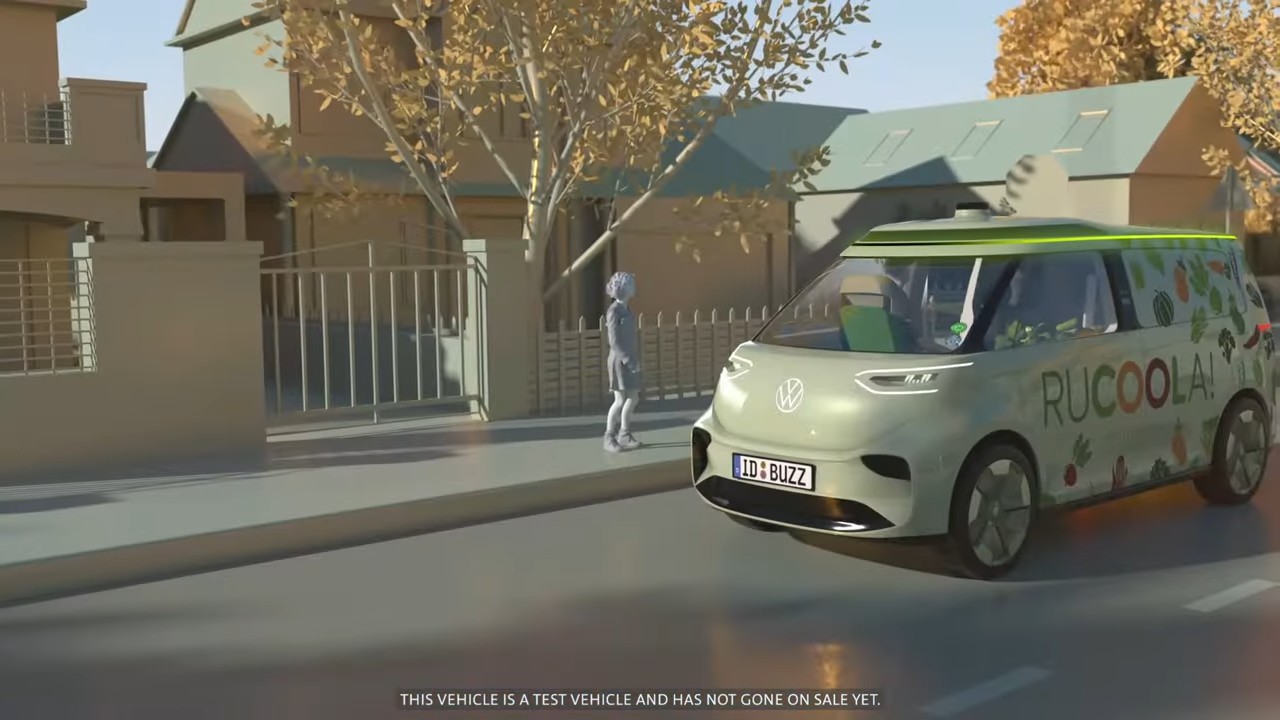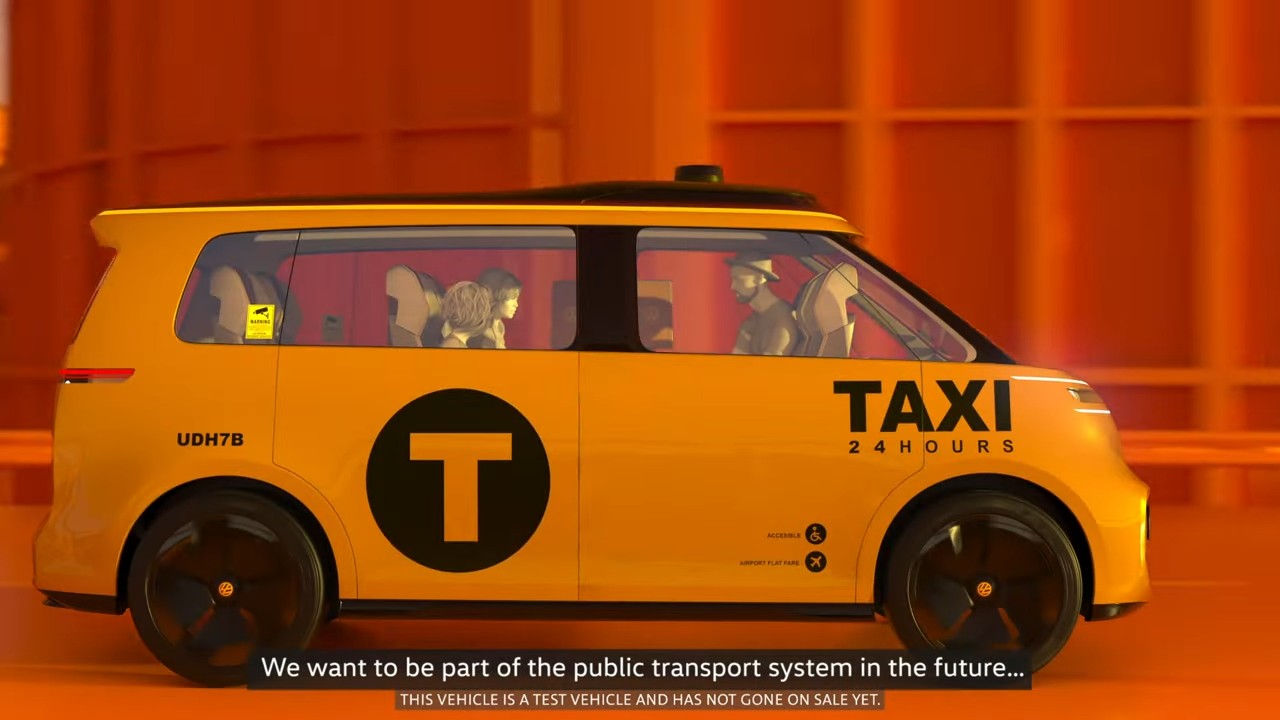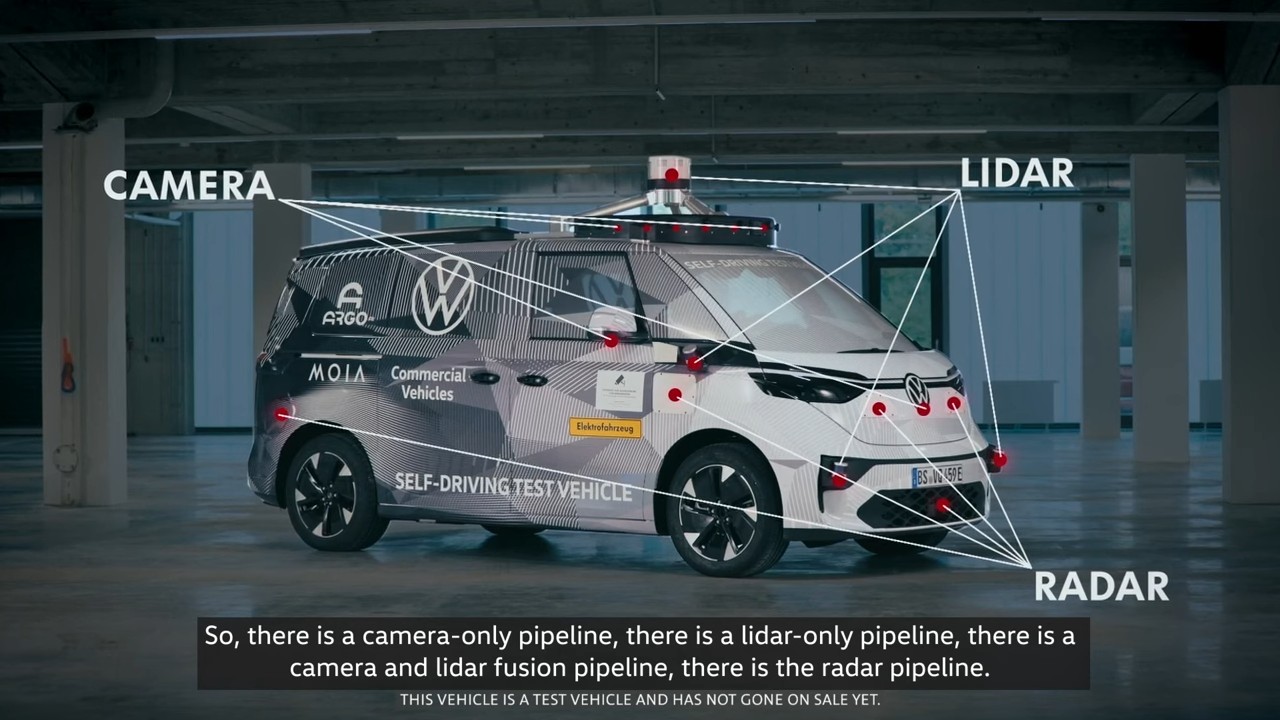Autonomous driving technology used to be the stuff of science fiction, but it’s becoming increasingly common as Level 2 and Level 3 systems can be found in passenger vehicles while more advanced Level 4 systems are being used in a handful of prototypes.
Among them is Volkswagen’s ID. Buzz AD, which has taken to public roads in Munich for the first time. Volkswagen Group CEO Dr. Herbert Diess went along for the ride and was joined by a safety driver as well as Argo AI Munich managing director Alex Haag.
As the electric van drives itself, Diess and Haag discuss the challenges of autonomous driving in city centers. As Haag noted, one of the hardest parts of creating an autonomous vehicle is designing how it interacts with pedestrians as they use “lots of little clues” to convey their intentions. These clues are easy for human drivers to recognize, but much harder for a computer to learn and understand.
Also Read: VW ID. Buzz AD Debuts With Argo AI Autonomous Tech, Set To Enter Service In 2025
The two also discussed the prototype’s 14 cameras, 11 radar sensors, and five LiDAR sensors, which enable the vehicle to get a 360 degree view of its surroundings. Information gathered by the cameras and sensors is used to create an environmental model, or map, which is then used to help the vehicle drive itself.
Volkswagen plans to roll out the ID. Buzz AD in 2025 and it aims to be safer than human drivers. The automaker hasn’t released a lot of details about their future plans, but noted autonomous vehicles will be in areas where people “need the most mobility” and this suggests the company is primarily focused on large cities. Officials also indicated the autonomous vans could adopt a ride-pooling approach that would see several different customers catching a ride together. Besides transporting passengers, the vans could also be used to deliver packages and consumer goods.
More interestingly, the video provides a glimpse of what the production ID. Buzz AD could look like. As you can see in the clip, animations show vans with rearward facing front seats and a B-pillar mounted screen that provides information about your journey as well as stops to pick up fellow passengers. The clip also suggests access to the vehicle will be controlled by digital key technology and shows a rendering of a van with an exterior B-pillar display that communicates with riders.




